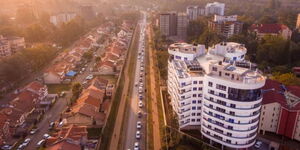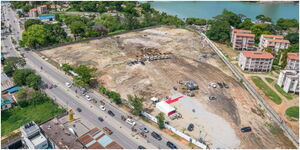Nairobi Governor Mike Sonko has delivered good news to city residents after he visited Ndakaini dam which supplies water to the metropolitan.
Speaking on Wednesday after conducting an inspection of the dam, Sonko indicated that Nairobians will receive daily supply of water as the water levels in the dam has increased to 90 percent capacity.
“I am happy to report that the water levels have increased massively and this is good news to residents who have had to live through stringent water rationing when the levels were low,” the governor noted.
[caption caption="Nairobi Governor Mike Sonko in his city hall office"] [/caption]
[/caption]
“Currently the water levels continue to increase as the dam is not in use, also other dams, Sasumua and Ruiru, which supply water to the city are overflowing,” he continued.
Due to this increase, Mathare North, TRM, Safari park and Zimmerman areas which have been receiving water only on Mondays will now receive water from Saturday to Monday.
The central business district will now get daily supply of water unlike the past when it received water two days per week.
Dandora got an extra day, Monday, of water supply in addition to the regular Tuesday to Thursday rationing.
Kayole will get an addition of 12 hours supply.
“We shall revert to the past water rationing schedule when the water levels drop but for now let's enjoy the improved supply while it lasts,” Sonko stated.
[caption caption="Increased water levels at the Ndakaini dam"] [/caption]
[/caption]
In April, the Nairobi governor had selected a team to investigate the low water levels in Ndakaini despite the heavy downpours in the country.
Giving an update on the same, he mentioned that it was explained that while the country was experiencing the mammoth rainfall, rains in the Ndakaini Catchment Areas were just starting.
The daily demand of water in the county is currently at 770,000 cubic meters but only a maximum of 526,000 cubic meters have been achieved forcing Nairobians to contend with dry taps as a normality.
According to Nairobi Water plan, the only way to solve water shortage is by the construction of a new dam every 10 years but since 1994 no dam had been constructed.












